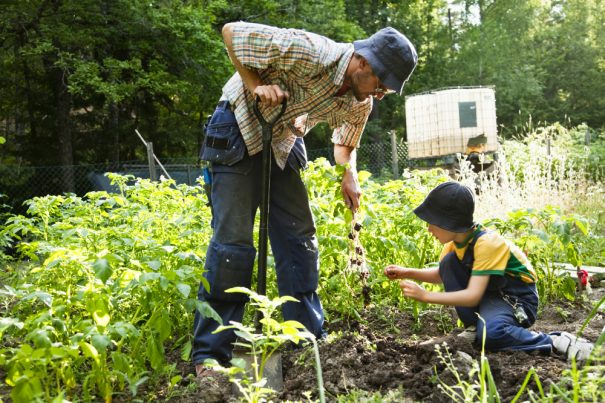
Food freedom: Gardening options for self-sufficient preppers
Friday, March 15, 2024 by Olivia Cook
http://www.naturalnewstips.com/2024-03-15-food-freedom-gardening-options-self-sufficient-preppers.html

If you’re willing to invest some of your precious time and effort, you can always get a harvest and be self-sufficient. Start small and scale up. Focus on crops that your family loves to eat, including herbs that add flavor to your dishes. You can also grow flowers to brighten your home and low-maintenance houseplants.
According to Survivopedia, gardening can be adapted to nearly any available space – whether you have a rural property with sprawling plots of land or a tiny apartment with just a windowsill and no backyard.
Vertical gardening
You can make the most of limited space, such as balconies, patios or small gardens, by growing plants – including flowers, herbs and vegetables – vertically. With the right setup and care, vertical gardens can help create privacy screens, reduce the risk of diseases and pests by keeping your plants off the ground and add aesthetic value to your space. (Related: Prepping 101: How to grow food in an indoor survival garden.)
Some of the foods you can grow successfully in a “live wall” system include:
- Greens – cabbage, kale, leaf lettuce, mustard greens, Romaine lettuce, spinach, Swiss chard
- Herbs (aromatic and therapeutic) – aloe vera, borage, calendula, catmint, chamomile, echinacea, goldenseal, hyssop, lavender, patchouli, scented geranium, sweet woodruff, yarrow
- Herbs (for sunny walls) – basil, beebalm, borage, chervil, chives, cilantro, cumin, dill, lemon balm, lemon grass, marjoram, mint, nasturtium, oregano, parsley, rosemary, sage, savory, stevia, thyme and wheatgrass
- Vegetables – beans, carrots, cucumbers, eggplants, garlic, onions, peppers and tomatoes
Learn more than 30 DIY vertical garden ideas (with photos) from Country Living.
Container gardening
You can grow flowers, fruits, herbs, succulents, vegetables and more, in grow bags, lined hanging baskets, pots (clay, glazed ceramic, metal plastic or resin), tubs and other repurposed containers. A great option for those with limited space, container gardens are also portable and can be moved around to different locations easily. It can also help prevent diseases and pests that may be present in the soil. (Related: Container gardening tips for the urban prepper.)
Raised garden beds
Take your container gardening to the next level through raised bed gardening. This is a form of gardening that is typically with a free-standing box or frame with no top that sits above the ground in a sunny spot with good-quality soil. Traditionally, raised beds are open on the bottom so that the plant roots can access soil nutrients above the ground level.
Straw bale gardening
Use bales of hay or straw instead of a bed of compost or soil to grow smaller plants, such as bush beans, determinate tomatoes, herbs, lettuce and peppers. Straw is inexpensive, easy to work with, and good for your soil. Watering it every day for a few weeks conditions the bale.
The bale generates heat as it breaks down and slowly releases nutrients, helping seeds to germinate and flowers, fruit and vegetables to thrive.
Community gardens
A community garden is an outdoor space that is used to grow fruits, vegetables and other plants by residents of a community and other interested parties where all of them are involved in sharing parts of its maintenance and upkeep, as well as the garden’s rewards. (Related: Why urban preppers are building these gardening plots.)
Food forest-home garden system
This food production system is based mostly on perennial crops that grow well together, require relatively low maintenance and are more resistant to extreme weather conditions and diseases. It is part of a concept called “permaculture” – a growing system that mimics a natural forest.
Learn how to grow vegetables by watching the video below.
This video is from the Winston Churchill channel on Brighteon.com.
More related stories:
The science behind the benefits of gardening for mental health and well-being.
Home gardening tips: How to make the best compost for healthy crops.
13 Things to add to your to-do list for summer gardening.
Sources include:
RECENT ARTICLES


The wonders of camouflage: A comprehensive guide on how to avoid detection when SHTF
By Olivia Cook

SHTF Comms: 18 Ways to stay in touch during an emergency
By Zoey Sky

8 Reasons why you should add coconut oil to your survival stockpile
By Zoey Sky

Prepping basics: How to scavenge and forage for supplies after SHTF
By Zoey Sky
COPYRIGHT © 2017 NATURAL NEWS TIPS


